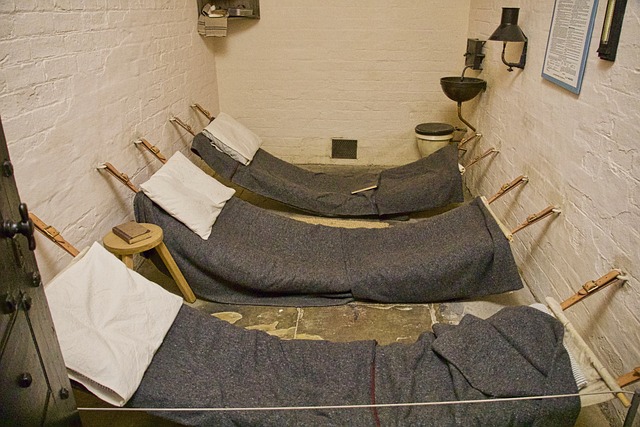Blood Alcohol Level (BAL) testing is a critical component in clearing employment impact records, especially for safety-focused industries. This process measures alcohol concentration to ensure legal standards for safe work performance. Employers use BAL test results to determine employee eligibility for sensitive roles, preventing accidents and ensuring regulatory compliance. Clearing records involves meeting jurisdiction-specific criteria and can significantly improve employment prospects. A clean record in BAL testing is crucial for job applications, especially in safety-critical industries. Understanding legal implications and rights is paramount, as BAL testing carries weight in hiring, promotion, and termination decisions. Technological advancements, such as digital systems and automated testing devices, are transforming blood alcohol level testing and record-keeping, enhancing efficiency, accuracy, and security.
In today’s digital era, understanding the impact of blood alcohol level (BAL) testing on employment opportunities is more crucial than ever. This comprehensive guide delves into the intricate world of BAL testing, exploring its eligibility criteria, effects on job prospects, and legal implications. We examine how these records are kept and discuss the future of testing practices. By shedding light on these aspects, we empower individuals to navigate the complexities surrounding BAL test results and their employment prospects.
- Understanding Blood Alcohol Level Testing
- Clearing Records: Eligibility Criteria
- The Impact on Employment Opportunities
- Legal Implications and Rights
- Future of Testing and Record Keeping
Understanding Blood Alcohol Level Testing

Blood Alcohol Level (BAL) testing is a crucial aspect of employment impact clearing records, especially in industries where safety and impairment are paramount. This process involves measuring the concentration of alcohol in an individual’s system to ensure they meet legal standards for safe work performance. BAL testing can be conducted through various methods, including breathalyzers, blood tests, and urine analysis, each offering different advantages and accuracy levels.
For many employers, particularly in sectors like transportation and construction, understanding and implementing BAL testing is essential for maintaining a safe working environment. Results from these tests play a pivotal role in determining employee eligibility for sensitive roles, helping to prevent accidents caused by alcohol consumption and ensuring compliance with regulatory requirements. By adhering to standardized testing protocols, employers can clear records efficiently while prioritizing the well-being of their workforce and the public.
Clearing Records: Eligibility Criteria

Clearing records, particularly in cases involving blood alcohol level testing, is a significant step towards rehabilitation and reintegration for individuals facing employment challenges due to their past actions. To be eligible for record clearing, an individual must meet specific criteria set by the jurisdiction. These often include factors such as time elapsed since the offense, successful completion of any required penalties or treatments, and evidence of personal growth and reform.
In many regions, a clean slate is available after a certain period has passed without any further infractions. Additionally, individuals may need to demonstrate their readiness to change by actively participating in counseling, community service, or other corrective measures. The goal is to ensure that the individual not only understands the severity of their past actions but also shows commitment to adhering to legal and societal standards moving forward, thereby enhancing their employability.
The Impact on Employment Opportunities

Having a clean record, free from past legal issues related to blood alcohol level testing, can significantly enhance employment opportunities. Many employers conduct background checks as part of their hiring process, and certain offenses or convictions related to alcohol testing may hinder job prospects. These records can create barriers, especially in industries where safety is paramount, such as transportation or construction.
Clearing these records allows individuals to present themselves as eligible candidates without the shadow of past legal troubles hanging over them. It opens doors to a wider range of employment opportunities and increases the chances of securing jobs that might otherwise be out of reach. This process empowers individuals to move forward in their careers and contribute positively to their fields, ensuring a fresh start and fair consideration.
Legal Implications and Rights

When it comes to employment impact clearing records, especially those involving alcohol-related incidents, understanding legal implications and rights is paramount. If an employee’s blood alcohol level testing reveals excessive intoxication, employers have a responsibility to address the issue, ensuring fairness and adherence to labor laws. These tests carry significant weight in legal contexts, as they can impact hiring, promotion, or termination decisions, thereby becoming a crucial aspect of employment law.
Employees have rights protected by legislation, including the right to privacy and due process. They must be informed about the testing procedures, given an opportunity to explain any extenuating circumstances, and ensured that their records are handled confidentially. Navigating these legal considerations is essential for both employers and employees to ensure a fair and transparent clearing process.
Future of Testing and Record Keeping

As technology advances, the future of blood alcohol level testing and record-keeping looks set to become more streamlined and efficient. Digital systems are already replacing traditional paper records, offering real-time data access and improved security measures. This shift not only enhances accuracy but also simplifies the process for both employers and employees. With automated testing devices and cloud-based platforms, organizations can quickly retrieve and analyze historical data, ensuring compliance with legal requirements.
The integration of advanced technologies in employment practices is a game-changer, especially when it comes to maintaining accurate records. For instance, innovative breathalyzer devices can provide instant, reliable blood alcohol level readings, which are then seamlessly logged into secure digital databases. This modern approach to testing and record keeping promises to make the process faster, more precise, and less prone to human error, ultimately benefiting all parties involved.
Blood Alcohol Level (BAL) testing, while crucial for public safety, significantly impacts employment opportunities. Understanding the eligibility criteria for clearing records is essential, as it can mean the difference between securing a new job and facing continued barriers. The legal implications and rights surrounding BAL testing must be navigated carefully, and the future of this process may lie in more advanced, accurate technology. By staying informed about these developments, individuals can better protect their employment prospects and ensure a fair balance between public safety and personal opportunities.






